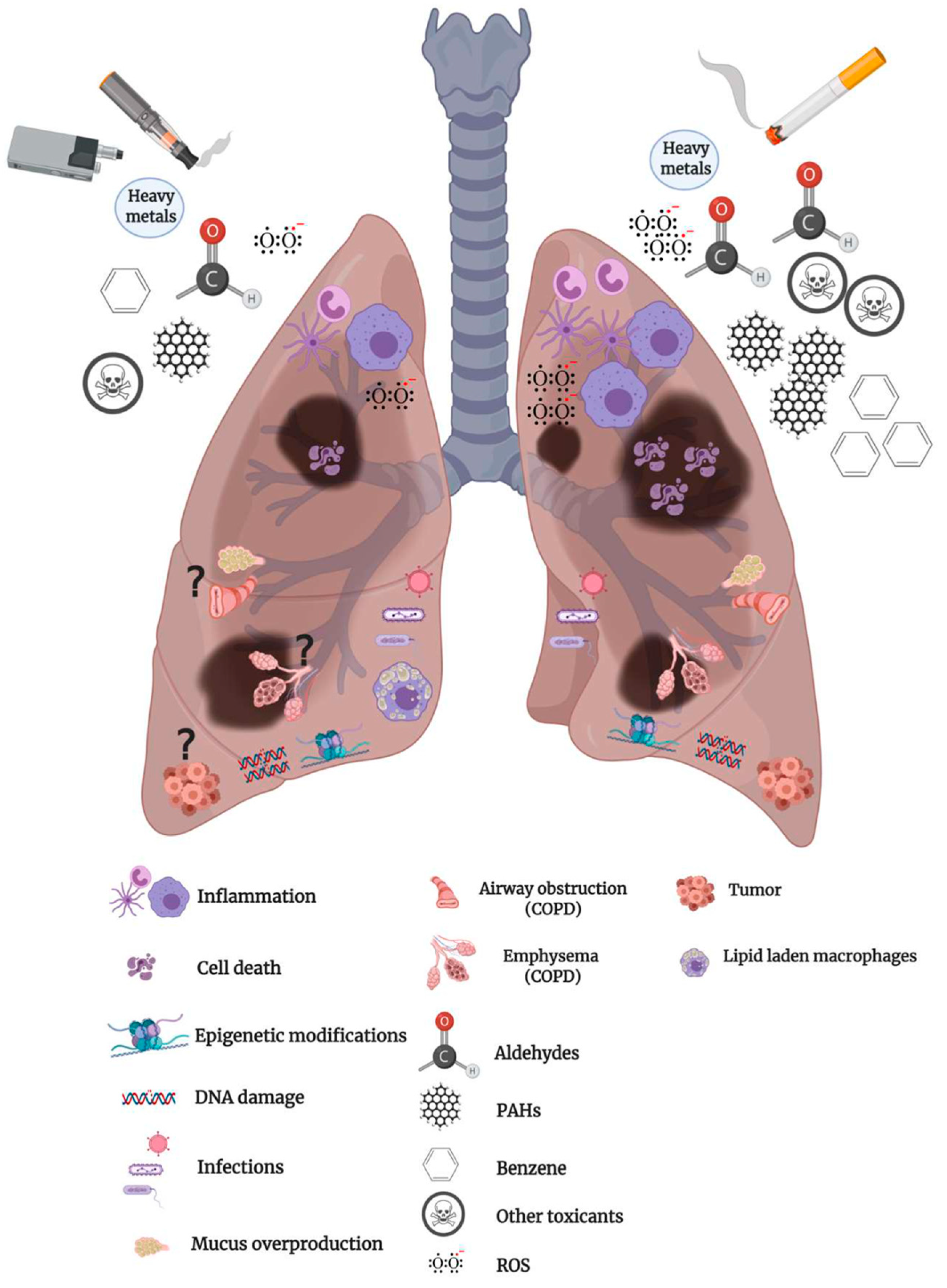What is COPD?
Chronic obstructive pulmonary disease (COPD) is a progressive lung disorder characterized by airflow limitation and respiratory symptoms, such as breathlessness and chronic cough. It encompasses conditions like emphysema and chronic bronchitis, primarily caused by long-term exposure to irritants, especially cigarette smoke.
Understanding Vaping
E-cigarettes, or vaping devices, heat nicotine-laden liquids into an aerosol inhaled by users. Marketed as smoking alternatives, they introduce chemicals like propylene glycol, flavorants, and ultrafine particles into the lungs.

Vaping and Its Effects on COPD
Vaping may exacerbate COPD symptoms and worsen breathing. Key mechanisms include:
- Inflammation: Aerosol components trigger airway inflammation, potentially increasing mucus production and bronchospasm, similar to tobacco smoke.
- Oxidative Stress: Chemicals in e-liquids generate free radicals, accelerating lung tissue damage and reducing lung function.
- Exacerbation Risk: Clinical evidence suggests vaping can lead to more frequent COPD exacerbations, with studies reporting increased dyspnea and hospitalizations in users.
Evidence-Based Insights
Research indicates vaping is not a safe COPD management strategy. For instance, vaping-associated lung injury cases highlight acute respiratory harm. While some promote vaping for smoking cessation, the American Thoracic Society advises against it for COPD patients due to insufficient evidence and documented harm.
Conclusion
Vaping poses significant risks for individuals with COPD, likely worsening breathing function and increasing morbidity. Quitting nicotine products entirely remains the optimal approach to protect lung health. Consult healthcare providers for evidence-based cessation support.








